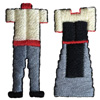 This is the last one of a series of articles dedicated to the movie costumes of “Anne with an E” TV drama. Let’s analyze the outfits of the major character Anne Shirley-Cuthbert and her fellow schoolgirls. What garments were popular among the young girls in the late 19th – early 20th century in Europe, America, and Canada? When did young women start to wear corsets? What outerwear, headdresses, accessories were worn by schoolchildren during this period? It’s really interesting how much modern schoolgirls’ fashion trends differ from the ones generally accepted by our society 100 years ago.
This is the last one of a series of articles dedicated to the movie costumes of “Anne with an E” TV drama. Let’s analyze the outfits of the major character Anne Shirley-Cuthbert and her fellow schoolgirls. What garments were popular among the young girls in the late 19th – early 20th century in Europe, America, and Canada? When did young women start to wear corsets? What outerwear, headdresses, accessories were worn by schoolchildren during this period? It’s really interesting how much modern schoolgirls’ fashion trends differ from the ones generally accepted by our society 100 years ago.
This article is based on the video from YouTube channel “Costume CO”.
Read also: Movie costumes in “Anne with an E” were based on period-accurate female clothing
Stage costumes in Canadian “Anne with an E” series – examples, main features, indigenous clothes
Here is Anne Dixon's moodboard and fabric swatches for the Avonlea girls’ schoolyard costumes.
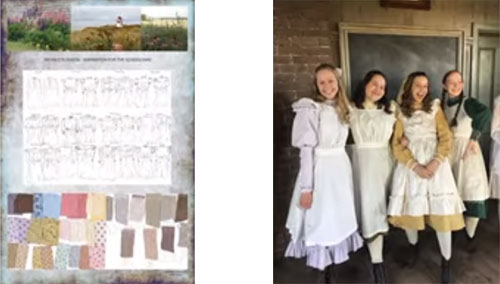
Their costumes are color-blocked throughout the three seasons, wearing pastel cotton prints with hues derived from wild flowers of P.E.I. and offset by white frilly pinafores.
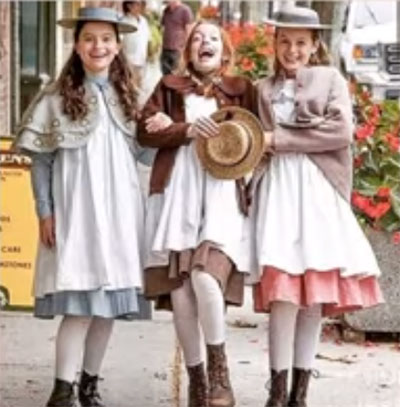
While often decorative, the main purpose of the pinafores was to keep the dress clean during school and chores.
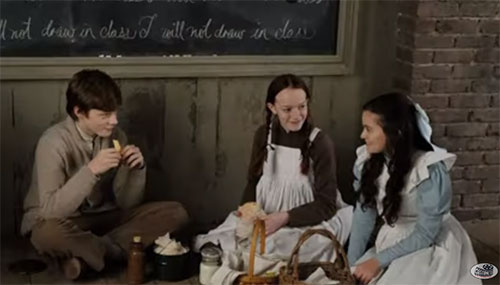
These girls’ dresses are examples from the turn of the century and the late 20th century.
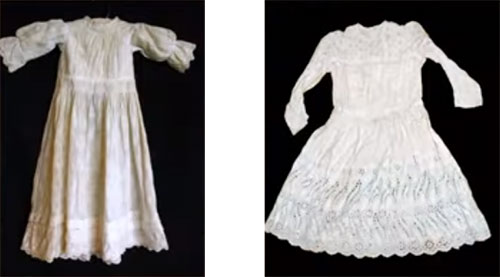
Cotton dresses, Canadian, 1900
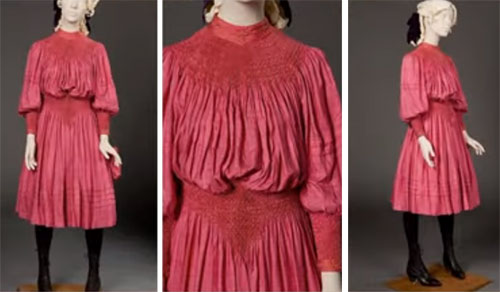
Dress, British, 1893-97
This is an example of a pinafore from the Met Museum in New York. This one is made of dotted Swiss sheer linen or cotton fabric.
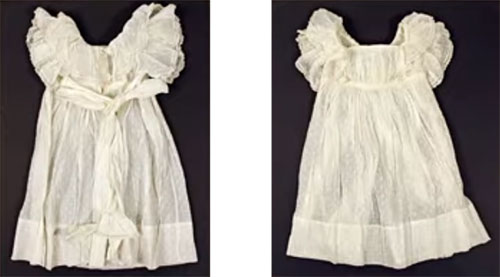
Pinafore, American, circa 1898
Anne’s costumes are largely in an earth tone palette to start, while her best pal Diana Barry is in shades of blue, with many of her dresses offset with crisp white accents, trim, and lace.
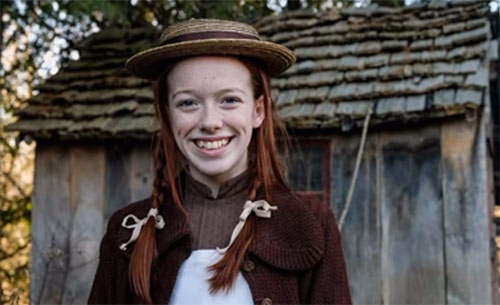
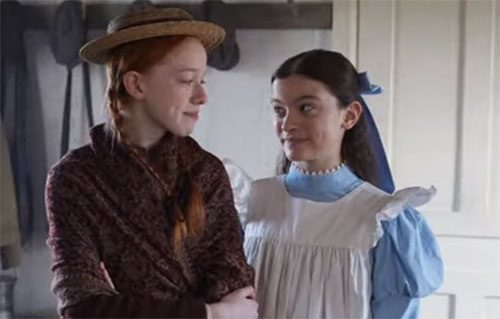
Ruby Gillis rounds at the triad in shades of pink, soft reds, and russet browns.
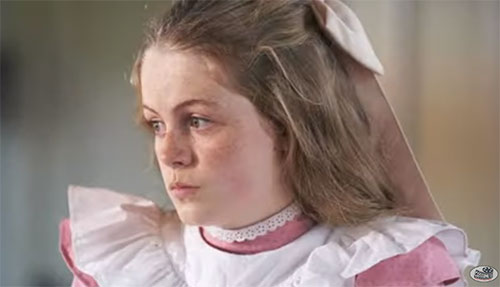
And then, the remainder of the gaggle of girls are dressed in lighter hues of lavender with lightly printed motifs.
Soft yellow ginghams and solids, like we see on Jane Andrews, and florals and earthy greens on Tillie Boulter.
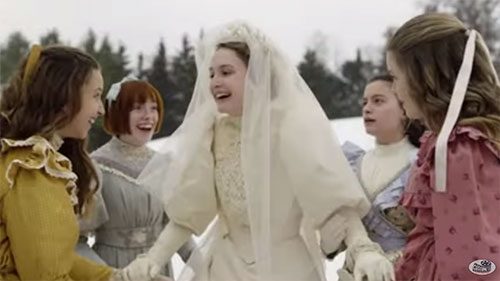
In warmer months, all of the Avonlea schoolgirls are allocated straw boaters and capelets, befitting the period.
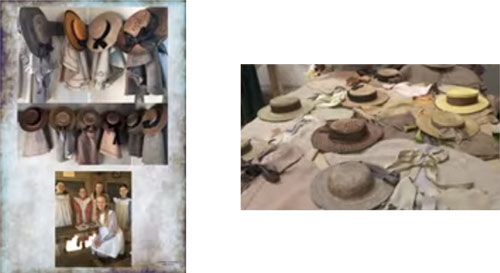
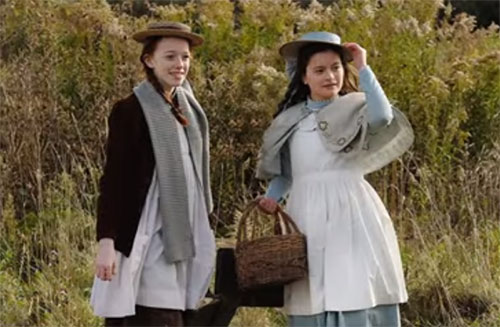
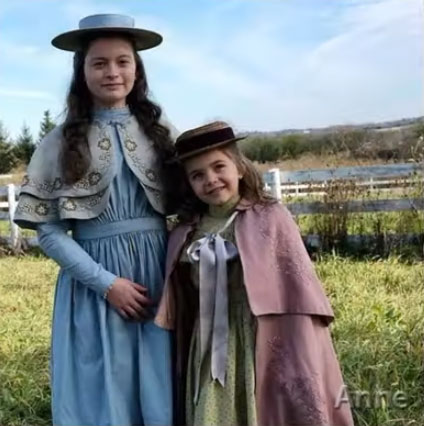
Here are some examples of straw hats, a very popular style for girls and adult women.
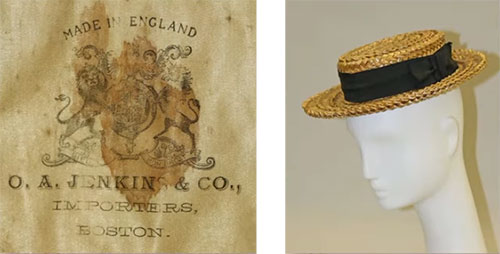
Boater, British, 1890-1900
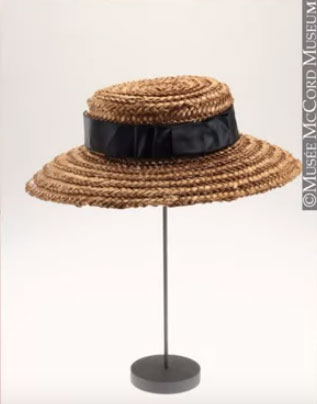
Straw hat, 1900
Anne’s straw boater is very similar to this woman's braided straw and silk ribbon woman's hat. It came from T. Eaton Company Limited, a Canadian retailer founded in 1869 that was once Canada's largest department store chain.
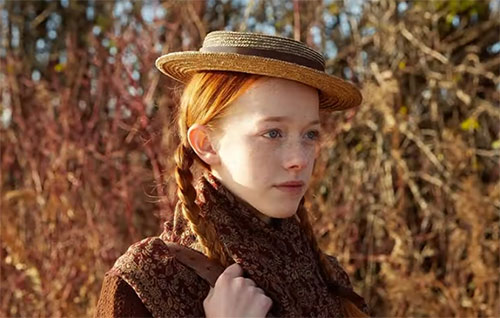

Straw hat, 1900
And in winter months, with the exception of Anne, the girls of Avonlea dress in woolen and velvet coats with built-in shoulder capes, accessorized with knitted tams and scarves.
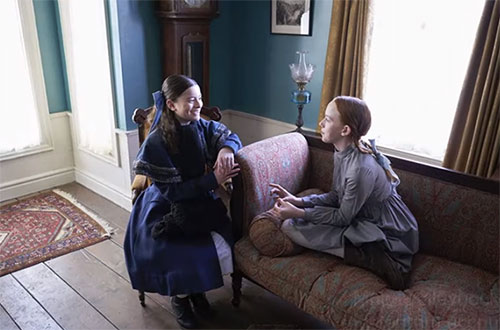
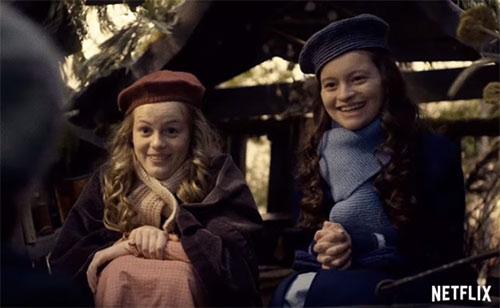
Anne's coat is very simple, without the flourishes of the other girls’ costumes.
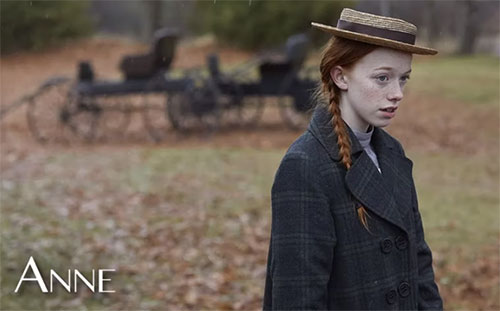
Here's an example of a winter wool jacket and skirt from Augusta auctions.
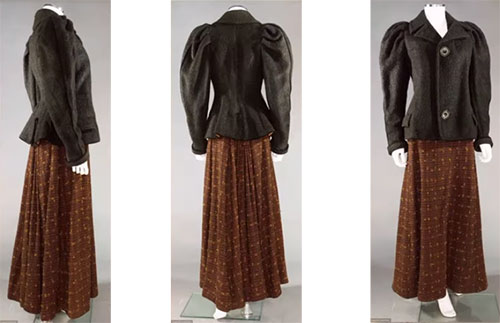
Jacket and skirt, American, circa 1895
All of the girls are wearing starched white petticoats and bloomers or drawers. Presumably, they would also wear a chemise, like an undershirt, like we see on Anne in a few scenes.
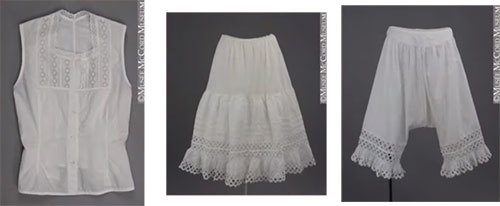
Underpinnings, mid to late 19th century
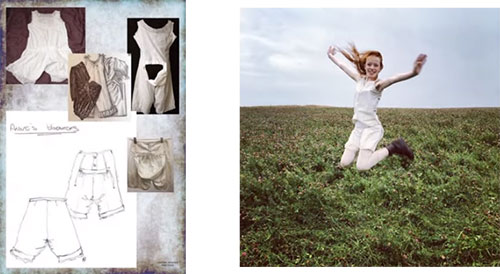
The girls also wear white stockings held in place with leg garters.

Although in Seasons 2 and 3, we occasionally see gray or black stockings.
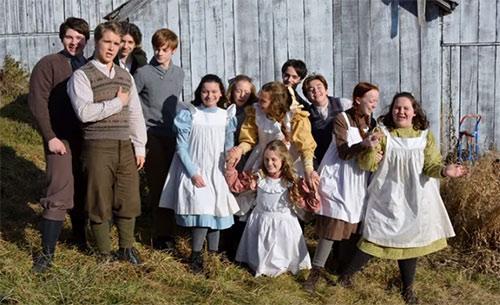
Historically, no matter the season or the dress, girls and boys would often wear black stockings because white would be very impractical and hard to keep clean in rural areas. So, this was likely a design decision.
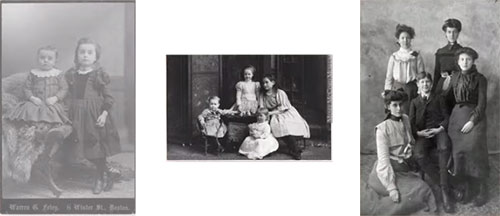
Portraits, 1890-1900
While it's mentioned in the story, girls in Avonlea do not wear corsets until they come of age, while in England, young girls began wearing training corsets around age 13. So, it's likely that an older girl like Prissy Andrews would be wearing something like this child's corset-waist from the McCord Museum.
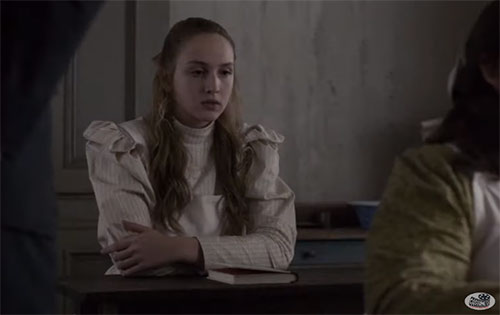
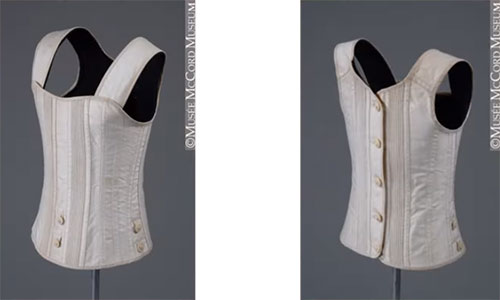
Child's corset-waist, 1890-1910
Here is Anne Dixon's costume design and moodboard of Anne's costume from Season 1.
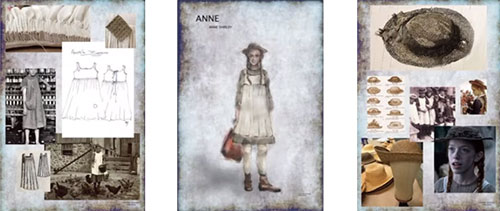
She said in a behind-the-scenes video, “Then you have Anne's iconic little dress. We wanted to have storyline behind that. Anne had only one dress and then she had outgrown it. You see the different lines where the hem would have dropped, proportions are a little smaller, it's a little bit tighter, but you just get this feel that she's been in this dress forever and hears many stories in this”.
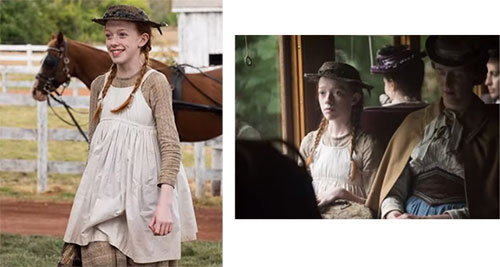
For Anne's iconic puff sleeve dress, the New York Times wrote that “Showrunner Walley Beckett went with a willow green and azure blue color palette for Anne's dress, which she knew off the top of her head”.
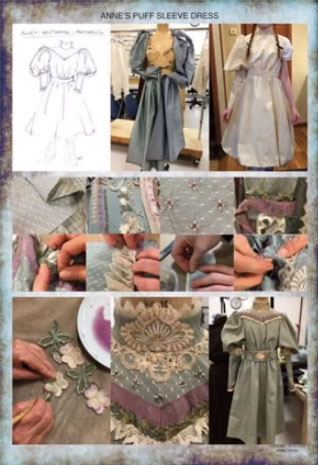
Anne Dixon thought that satin would be too much and too reminiscent.
It's true that her dress looks surprisingly overwhelming on her little frame. This new design, with its delicate lace ruffle and appliques, free from 80s polyester, as Walley Beckett describes it, feels more anchored in the realm.
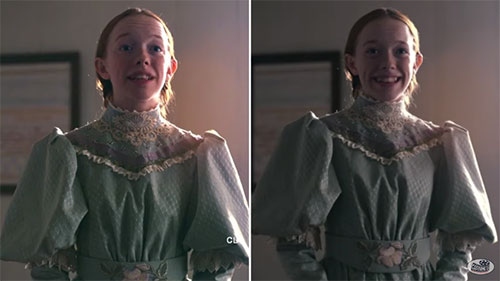
It's not to say that synthetic silks such as rayon weren't a thing in the late 1800s but they didn't become widespread until well into the 1900s.
White eyelet puff sleeves with blue accents was the color used in the musical, so it seemed logical that Anne's dream dress would be of similar colors, like we see with Diana's dresses, including the one that she borrows from Diana in Season 3.
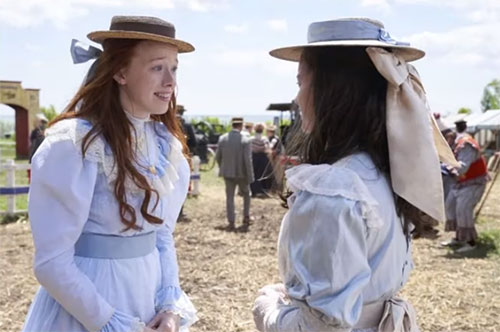
In the book, Anne describes the dress color as “A lovely soft brown gloria with all the gloss of silk… with two beautiful puffs divided by rows of shirring and bows of brown silk ribbon”.
In the end, the design team went with this muted green and move dress with ivory lace accents.
Costume designer Alex Reda says of Season 3, “Anne, having grown out of her orphan look, was really exciting to see, and because she's such an iconic character, it's a huge pressure to actually figure out what Anne becomes after being the orphan”.
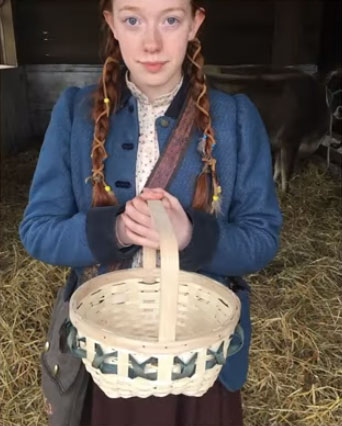
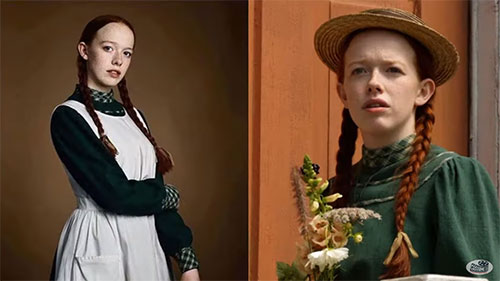
Alex Reda said, “We actually did really beautiful little hand-embroidery on pieces and small details that would have been created by Marilla. So, it all needs to have a story in behind it. It has to have come from somewhere, and somebody's had to have made it, and where did they get that fabric, and why it's that color – it's a huge amount of small details”.
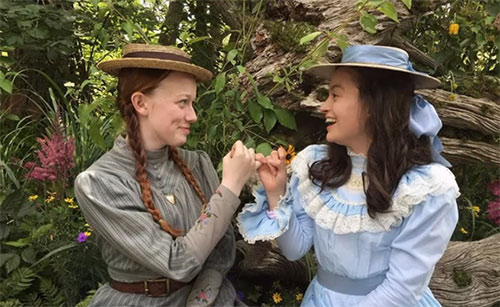
This lady's suit with a matching hat borrowed from aunt Josephine is Anne's first foray into adulthood, a moment of dress-up before actually taking the plunge.
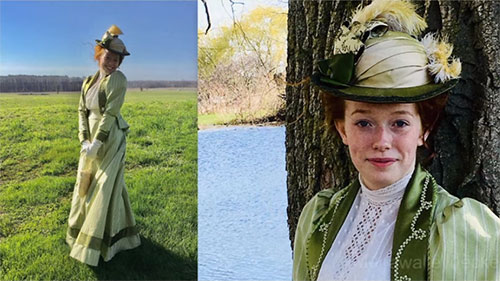
As the girls grow and come of age, the skirt length drops, the color palette becomes more intense – they're now fleeting innocence intended with a more mature silhouette.
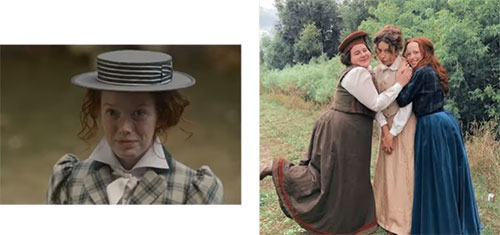
Marilla made this royal blue velvet outfit for Anne. While Matthew was having a difficult time coming to terms with Anne moving on to college, Marilla is all in as a mother, having changed right alongside Anne.
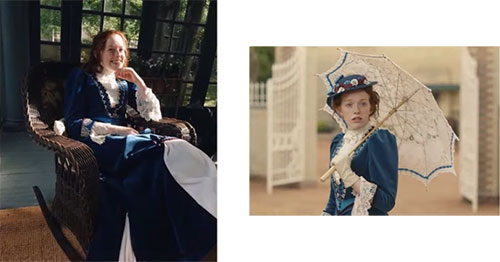
Here's a close-up of Anne's parasol.
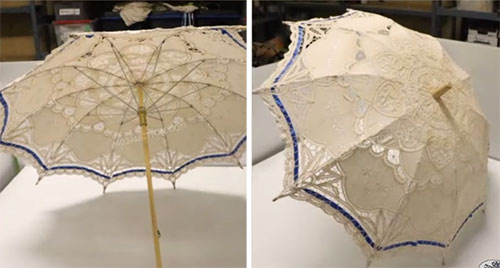
And then we have two parasols in the McCord Museum from the same era.
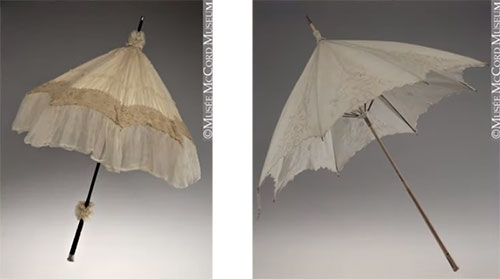
Parasols, 1900, 1880-1900
Read also: Movie costumes in “Anne with an E” were based on period-accurate female clothing
Stage costumes in Canadian “Anne with an E” series – examples, main features, indigenous clothes
(c)
